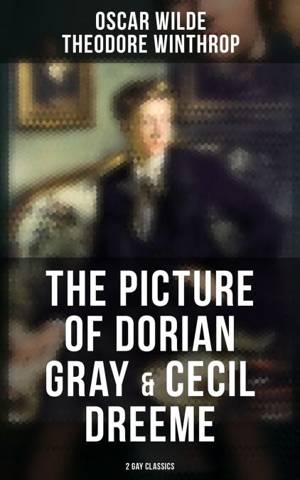
- Afhalen na 1 uur in een winkel met voorraad
- Gratis thuislevering in België vanaf € 30
- Ruim aanbod met 7 miljoen producten
- Afhalen na 1 uur in een winkel met voorraad
- Gratis thuislevering in België vanaf € 30
- Ruim aanbod met 7 miljoen producten
Zoeken
The Picture of Dorian Gray & Cecil Dreeme (2 Gay Classics) E-BOOK
Oscar Wilde, Theodore Winthrop
E-book | Engels
€ 1,99
+ 1 punten
Omschrijving
In 'The Picture of Dorian Gray & Cecil Dreeme: 2 Gay Classics,' readers are offered a profound exploration of identity, morality, and the societal bounds of Victorian and early post-Victorian eras. This anthology juxtaposes Oscar Wilde's decadent exploration of aestheticism and immortality with Theodore Winthrop's poignant, though subtler, narrative on gender and the nuanced codes of queer existence before such identities were openly acknowledged. Both novels utilize differing literary styles—Wilde's ornate prose full of epigrammatic wit contrasts sharply with Winthrop's more restrained, Gothic-infused narrative. This interplay enriches the thematic discourse on the nature of self and society's attempt to mold individual identity. The historico-literary backdrop underpinning this collection highlights a time when burgeoning notions of individuality and queerness were often cloaked in allegory and symbolism. Oscar Wilde, an icon of literary flamboyance and martyr of gay persecution, contrasts with the relatively obscure Theodore Winthrop, whose work posthumously nourished the roots of homosexual literary exploration. This collection exemplifies the early stages of what would evolve into more explicit representations in 20th-century LGBTQ+ literature. These foundational texts offer readers a unique educational experience, stitched richly with diverse perceptions that resonate through time. An invaluable resource for students and enthusiasts of both Victorian literature and LGBTQ+ studies, the dual presentation encourages thorough analysis and reflection on how these narratives from over a century ago still significantly influence contemporary discourse on identity and liberty. Engaging with this collection promises not just literary enjoyment but a deeper understanding of the interplay between historical context and evolving themes of personal and societal identity.
Specificaties
Betrokkenen
- Auteur(s):
- Uitgeverij:
Inhoud
- Aantal bladzijden:
- 548
- Taal:
- Engels
Eigenschappen
- Productcode (EAN):
- 4066338114990
- Verschijningsdatum:
- 3/01/2022
- Uitvoering:
- E-book
- Beveiligd met:
- Digital watermarking
- Formaat:
- ePub

Alleen bij Standaard Boekhandel
+ 1 punten op je klantenkaart van Standaard Boekhandel
Beoordelingen
We publiceren alleen reviews die voldoen aan de voorwaarden voor reviews. Bekijk onze voorwaarden voor reviews.








